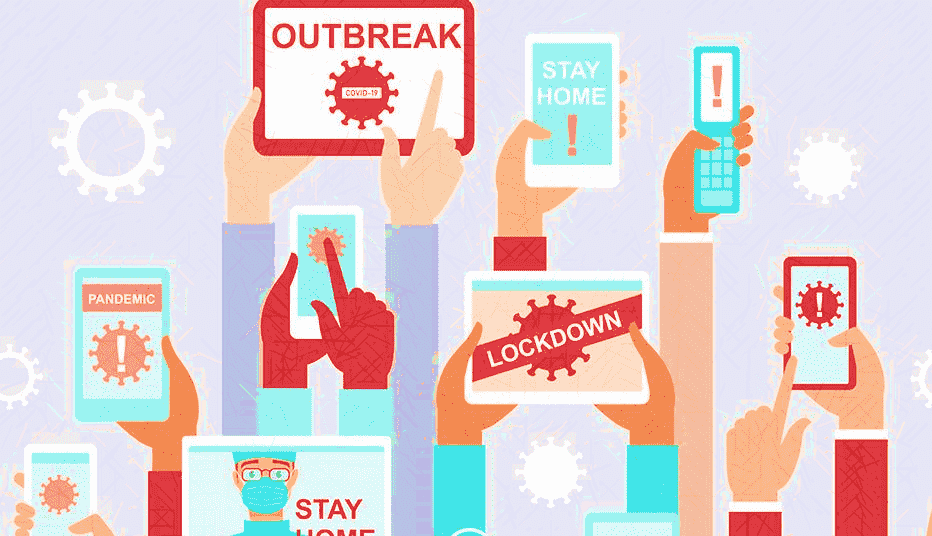As India got hit by the deadliest ever health crisis in 2020 where a nationwide lockdown took place following complete isolation of people from the social world. Social media actually played a pivotal role in bringing people together virtually, bagging on the opportunity to fill in the void that was created by this nightmare.
But is it the only angle that we should focus upon? I guess, there is a need to re-evaluate the role played by social media in the Covid19 pandemic.

A Guardian angel:
♦ With a major part of the public staying at home, Social media marketing has been proved to be the biggest tool for businesses willing to promote their offerings to engage customers with their brands and products.
♦ The awareness and wellness campaigns to promote social dialogues, informational and motivational hashtags like #StayHomeStaySafe, #MyPandemicSurvivalPlan went viral, strengthened people to stay positive and enthusiastic.
♦ It helped people to gel up virtually making it easier to communicate without the fear of breaking social distancing laws.
♦ Guiding people through tough situations from finding plasma donors to the availability of beds, the forwarding of social media posts has done it all.
♦ Platforms like Facebook, Youtube, Instagram gave people the opportunity to earn and show their creative side to the world from the confinement of their houses.
♦ Social media apps like Whatsapp, Telegram also worked as educational and knowledge-sharing platforms while schools and tuitions were not in place. For example- For children who study in Government Primary Schools and live in areas with poor connectivity, teachers introduced WhatsApp groups and started sharing study material and short videos to make them understand topics better. Kids were able to watch these videos even from a low-cost smartphone with relatively slower internet.
A Devil in Disguise:
♦ While Social media was helping people around, it also became the source of fake news marking it as an informational pandemic. Social media platforms were flooded with corrupted articles, be it ‘The way to check if you have Covid symptoms’, ‘Home remedies to cure the infection’, ‘How to protect yourself from being infected’, ‘Know the torch bearers of Coronavirus‘ and many more. The rumors of chaos and disorganization demoralized the integrity of individuals creating a situation of dilemma and uncertainty.
♦ Making a pandemic about any specific religion, caste, or country, blaming them to be the catalyst for it, was not the rational thing to do. The hatred published in the form of social media posts, provoking people against certain communities, was disappointing and disastrous.
♦ Depression, anxiety, insomnia, desolation were the prime issues faced by kids and even adults due to overindulgence in Social media while being quarantined. Some used it to share their emotional trauma and challenges while people with a negative mindset got discouraged seeing the experiences instead of acknowledging them as a learning experience.
♦ Whatever great support that social media provided during the outbreak, there is a harsh reality that It can not take the place of social gatherings and celebrations where people actually used to spend time with each other rather than just seeing each other’s faces through the virtual walls of some video calling facility.
Hence, we can infer that as every coin has two sides, social media also had its pluses and minuses during the outbreak. It’s all about how you perceive things and accommodate them in your perspective accordingly. Thus, we can conclude this analysis by recollecting a great thought by Henry David Thoreau-
“It’s not what you look at that matters, It’s what you see”.
Related Posts
X Social Media to Offer Basic features for Pocket Change
X Brings Audio and Video Calls as a Subscriber-Only Feature for the Users
Elon Musk says X will soon charge a small subscription fee for its services
TikTok and Billboard join hands for TikTok’s Top 50 Songs
Meta rolls out “Search” feature on Threads for ‘most’ countries including India, the UK, and the US
Instagram Experimenting with Option to Share Feed Posts Solely with Your ‘Close Friends’